Glancing through the NCTM Annual program, I could almost feel my arms and legs being pulled in no less than 4 directions for any given session timeframe. Respected colleagues in our community shared their expertise and I’m thankful to have had the opportunity to learn from so many folks who continue to do great work. Here are some highlights from my experiences in San Antonio.
Classroom Dessert: Putting Assessment into Students’ Hands 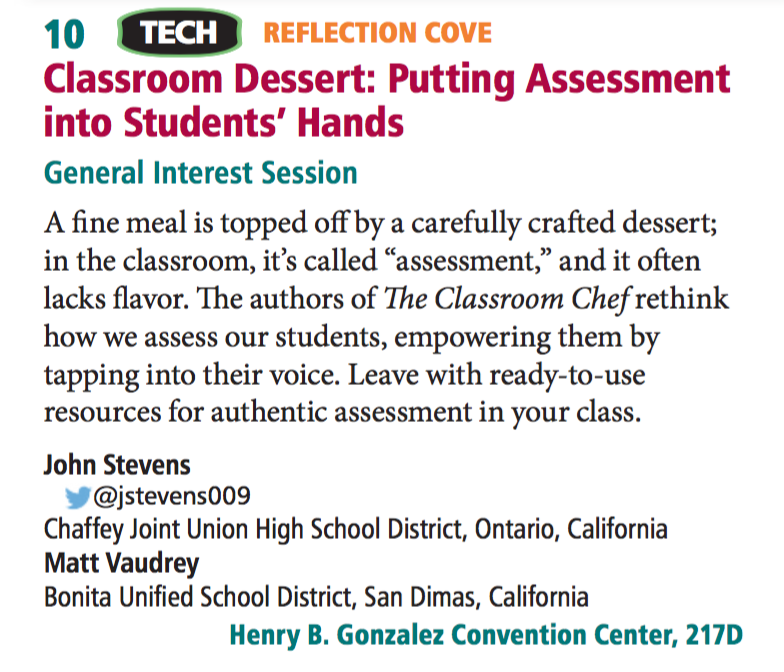
John Stevens and Matt Vaudrey showcased alternative ways to assess student understanding by encouraging student choice. Whether students preferred to show what they know through a paper-pencil task, a creative video, or a work of original art with accompanying written explanations, student work-samples featured unique ways to arrive at the same goal – learning!
Looking for ideas? Check out the list of ideas John shared in the photo below. Even more here: http://www.classroomchef.com
Math Task Makeover with Desmos Activity Builder 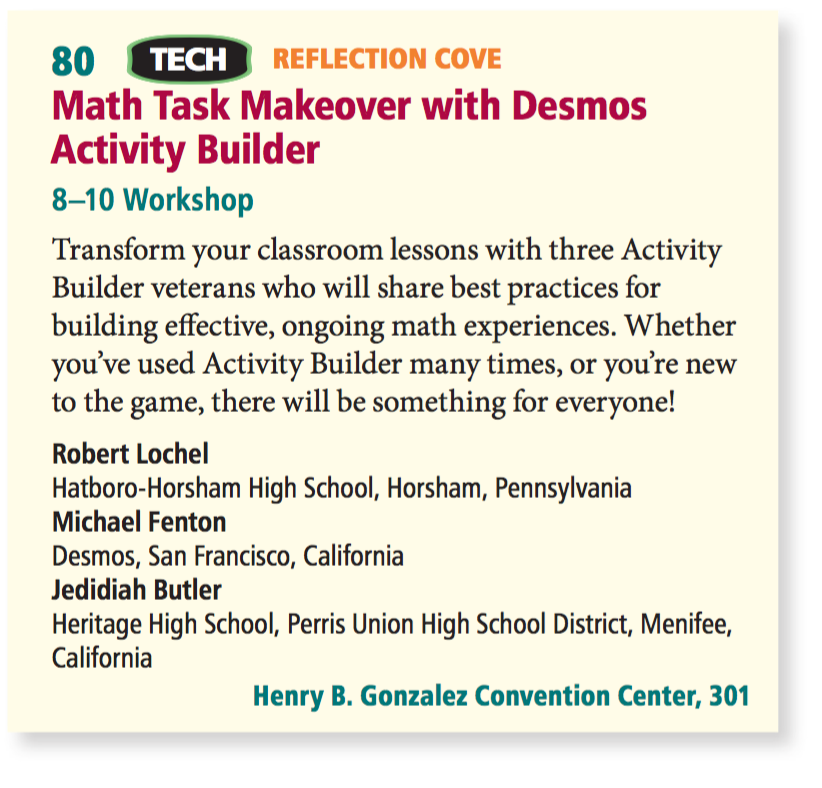
Bob Lochel, Michael Fenton, and Jed Butler provided before-and-afters of some all-too-familiar textbook spoilers and worksheet ho-hums such that Desmos Activity Builder up-leveled student experiences! Check out the latest support resources for teachers at learn.desmos.com/create and a visual summary of the session through one of many amazing sketch notes shared by Karen McPherson!
Makeover Your Math Lessons with @Desmos #NCTM17 #nctmannual @bobloch @mjfenton @MathButler AWESOME!!! pic.twitter.com/aSjtYhbJ0E— Karen McPherson (@nc_teach) April 6, 2017
“Noticing and Wondering” as a Vehicle to Understanding the Problem 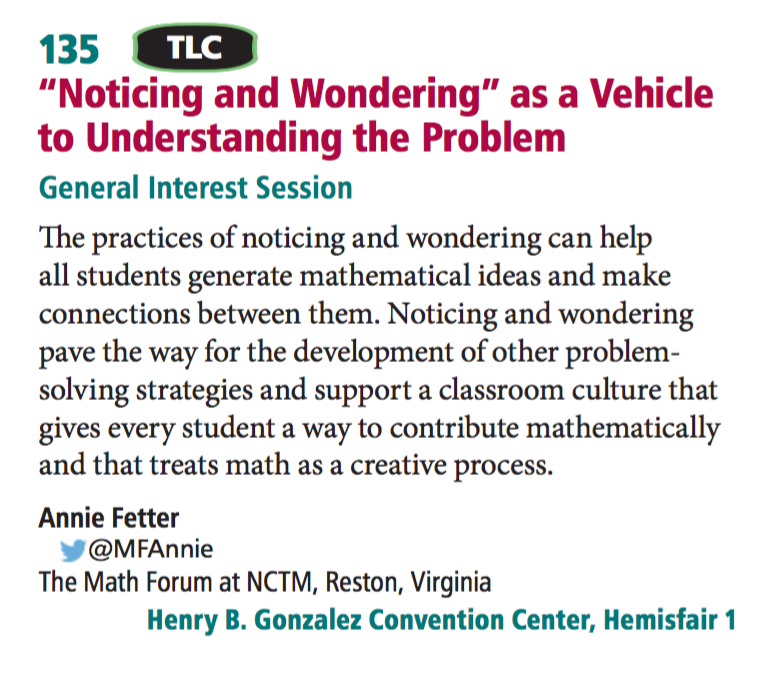
Annie Fetter helped attendees realize that there is a part of problem solving that good problem solvers do naturally. We educators need to put natural structures in place to help students problem solve. One way to do this? Withhold the numbers at first – give students a chance to seek relationships and patterns rather than rush to “the answer”. Everyone can “notice” and “wonder” about something visual. Does it take time? It sure does, but this time spent upfront reaps rewards once a lesson progresses since students have already done so much of the “work” up front. Noticing and wondering is not a time zapper… it’s actually a time saver! All students are “doing something” – it’s not a strategy where “fast kids” get the answer and the others are just waiting for them to tell the answer. Annie’s pointed reminders about the power of “noticing and wondering” are already impacting my lesson plans for tomorrow! Watch Annie in action here: https://www.youtube.com/watch?v=a-Fth6sOaRA
Mathematical Mindsets: Creating a New Future for Math Teachers and Learners 
Jo Boaler continues to press on with her math revolution! I was thrilled to hear her speak in person, and I think my neck is still a bit sore from nodding in agreement with her philosophies and findings. Visit https://www.youcubed.org and be prepared to spend a few hours there. Check out my favorite slide from her talk below. 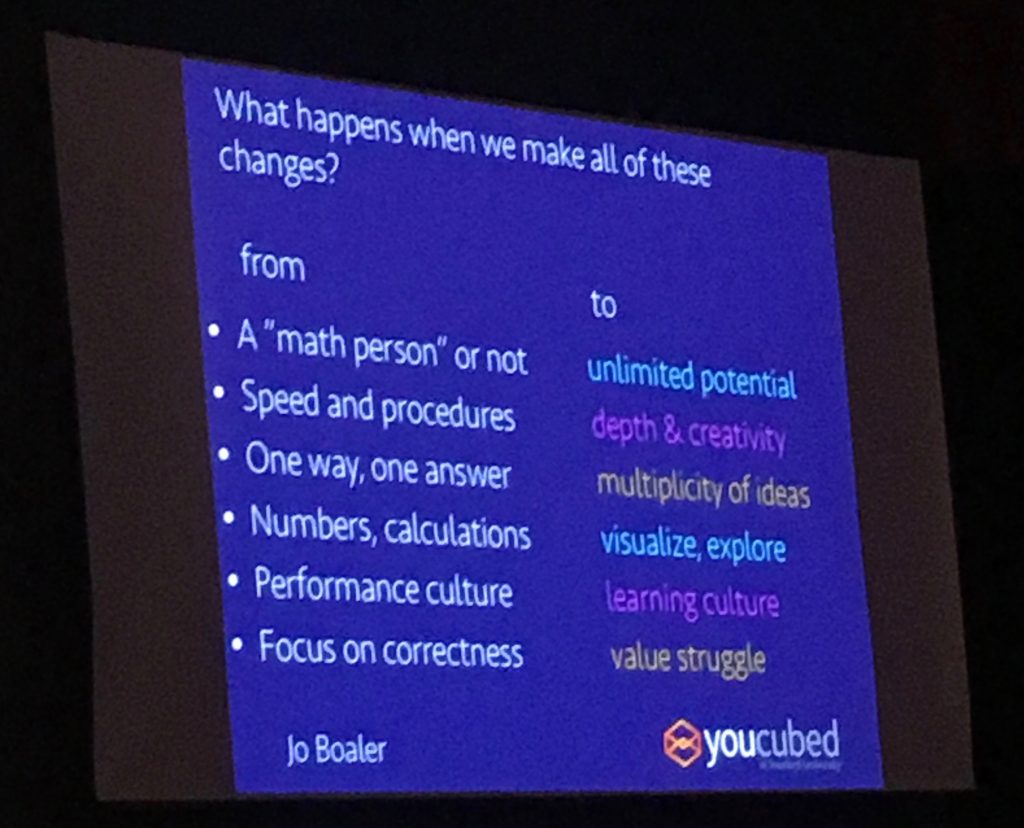
Open Educational Resources: Designing a Middle School Curriculum
Kate Nowak, Ashli Black, and Bill McCallum shared about the process and progress of developing a cohesive OER middle school math curriculum set to be released in July 2017, so stay tuned! Attendees got an exciting sneak-peek in this session. I can’t wait to further explore this work. To learn more now, check out the math curriculum tab at Open Up Resources using the link below: http://openupresources.org
Looking Forward: What’ll Be Possible in Math Ed in a Decade?
 Eli Luberoff, the CEO and Founder of Desmos, emphasized the importance of our students’ ability to solve non-routine problems as we dive into future careers. Eli addressed the purposeful use of technology in our math classrooms to assist our students in preparing for their own futures, even claiming that our math classrooms are one of the most important places on earth! Feel the weight of that honor and responsibility for a moment! Additionally, Eli proposed the use of a tool like Desmos Marbleslides to meet unique differentiation needs of our students because of the “low floor, high ceiling” nature of these tasks. Finally, in WWDC-Desmos-Style, Eli let us play with the latest and not-yet-final-draft of the new Desmos Geometry construction tool at desmos.com/geometry. I wish I could have recorded the audio of the attendees during this time. There were oooo’s and ahhh’s and even moans and groans of delight as teachers began imagining how this tool will change the ways students explore geometric concepts.
Eli Luberoff, the CEO and Founder of Desmos, emphasized the importance of our students’ ability to solve non-routine problems as we dive into future careers. Eli addressed the purposeful use of technology in our math classrooms to assist our students in preparing for their own futures, even claiming that our math classrooms are one of the most important places on earth! Feel the weight of that honor and responsibility for a moment! Additionally, Eli proposed the use of a tool like Desmos Marbleslides to meet unique differentiation needs of our students because of the “low floor, high ceiling” nature of these tasks. Finally, in WWDC-Desmos-Style, Eli let us play with the latest and not-yet-final-draft of the new Desmos Geometry construction tool at desmos.com/geometry. I wish I could have recorded the audio of the attendees during this time. There were oooo’s and ahhh’s and even moans and groans of delight as teachers began imagining how this tool will change the ways students explore geometric concepts.
Q: Do the @Desmos marbles obey the laws of physics?@eluberoff: …Most of them! Having a blast with differentiation #nctm17 #nctmannual pic.twitter.com/7WAewldICz— Cathy Yenca (@mathycathy) April 7, 2017
Using Digital Tools to Give Every Student a Voice 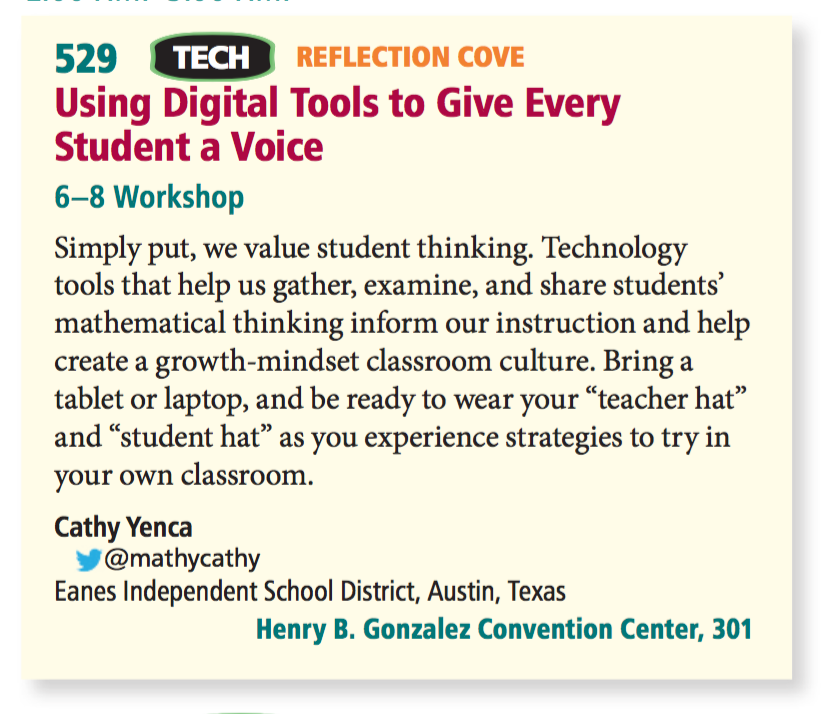
With a foundation set on NCTM’s Position Statements regarding formative assessment and technology integration, we explored how connecting a math standard to a #MTBoS resource by using a technology tool can give every student a voice in class. Check out a self-paced experience by visiting Nearpod.com and use the code FHBNX (valid through April 2017). Feel free to participate if you weren’t able to make it, or if you were in the session, to provide any feedback you’d like to share to help me improve upon the delivery of these ideas! It’s challenging for me to share about something I experience with my students in my classroom in a conference setting where the attendees aren’t 12-14 years old, and I’m looking to get better at this! Also attached below is a handout that includes links to take-away resources to use and/or edit for your own classroom use. NCTM 17 Attendee Notes Session 529 Yenca
Fun fact: Our live Nearpod session code was GIJOE. I thought for sure someone at Nearpod was messing with me, and had created that code intentionally. It turns out, the code was generated randomly. The probability of that happening is (1/26)^5 folks… or as a decimal…  Perhaps I should go buy a lottery ticket.
Perhaps I should go buy a lottery ticket.
Dan Meyer used Guershon Harel’s paper as inspiration to pursue the idea of creating the “intellectual need” for the mathematics we explore with our students. I’m pretty positive we’ll have a video of this talk to share later. You know Dan – his talks can be tough to describe in a blog post. You’ll want to experience this one for yourself. (Will post a link later). 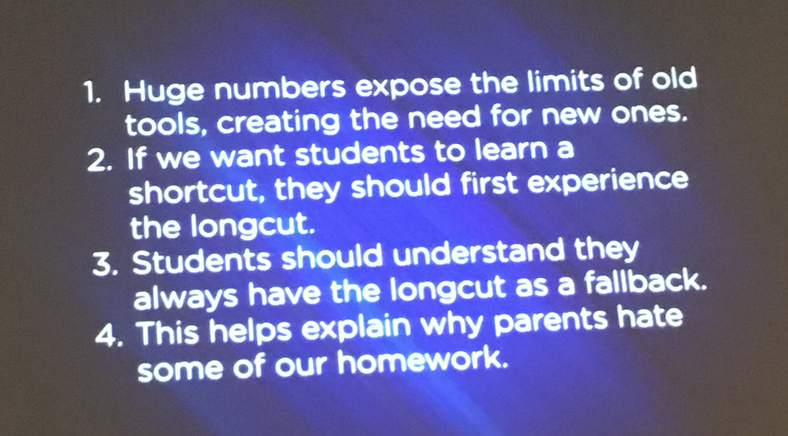
The Struggle is Real: Tasks, Academic Status, and Productive Problem-Solving
Geoff Krall challenged us to think deeply about “productive struggle” and how we promote productive struggle to students who’ve been conditioned otherwise. Geoff’s take on the topic is that it takes a wholistic approach of three elements: Quality tasks, Academic safety and Effective facilitation strategies. Visiting emergentmath.com is a great place for folks to find an abundance of quality tasks. Additionally, we explored this Open Middle task in Geoff’s session and got surprising results that sparked conversations lasting beyond the session!
Had great discussions about this @openmiddle problem in @geoffkrall‘s session! https://t.co/fOvduSce8W #nctmannual pic.twitter.com/2NLkGgMFeN
— Cathy Yenca (@mathycathy) April 8, 2017
Empowering Digital Collaboration in 3 Acts
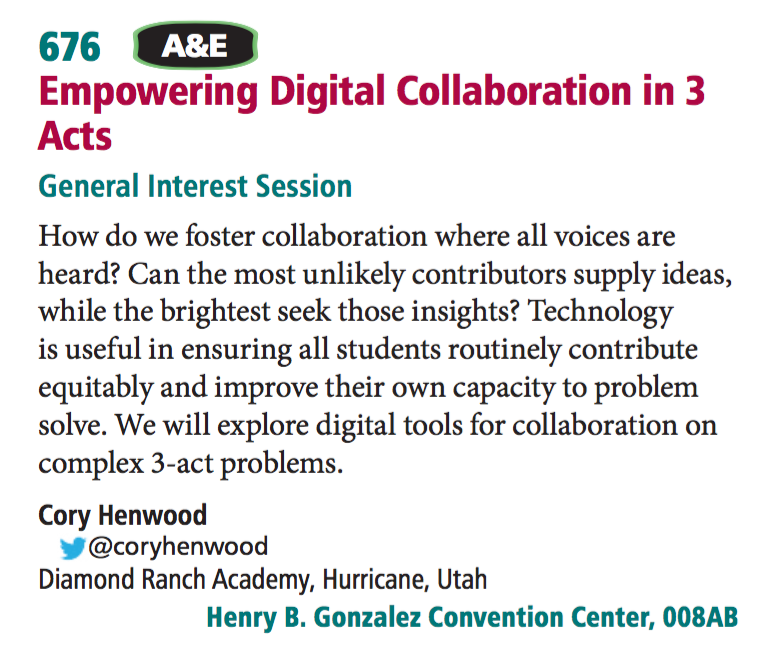 I finally got to meet Cory Henwood! We’ve respected each other’s work in this realm of digital collaboration for several years, and it was a treat to experience his session. The benefits of using digital tools to capture and share student thinking are worth considering. Additionally, Cory shares a boatload of resources at http://henwoodmath.weebly.com
I finally got to meet Cory Henwood! We’ve respected each other’s work in this realm of digital collaboration for several years, and it was a treat to experience his session. The benefits of using digital tools to capture and share student thinking are worth considering. Additionally, Cory shares a boatload of resources at http://henwoodmath.weebly.com
#Shadowcon17
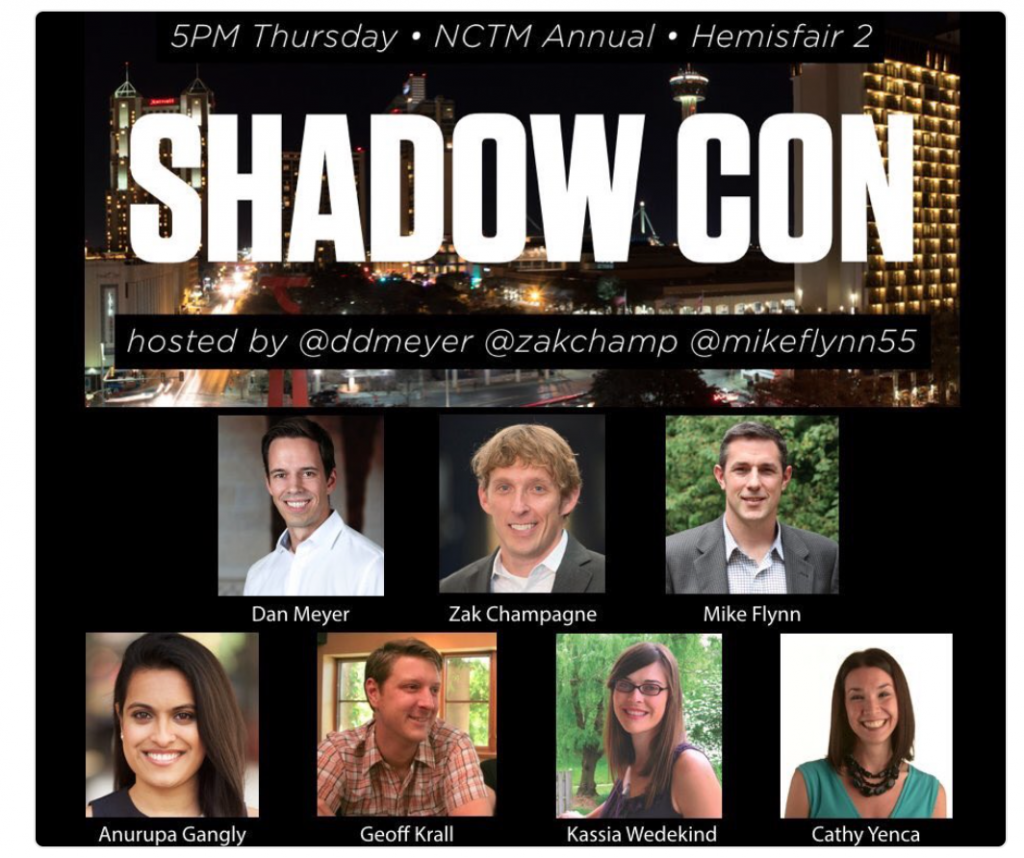 One of my proudest moments to date in my 40ish years on the planet may well have been having the opportunity to share at #ShadowCon17. At LEAST a Sagan of thanks to Dan Meyer, Zak Champagne, Michael Flynn, and NCTM leadership for the opportunity and support you’ve offered to help us four Shadowcon-ers to prepare for this experience. I look forward to continued work as we launch our free online courses this fall. Sign up here.
One of my proudest moments to date in my 40ish years on the planet may well have been having the opportunity to share at #ShadowCon17. At LEAST a Sagan of thanks to Dan Meyer, Zak Champagne, Michael Flynn, and NCTM leadership for the opportunity and support you’ve offered to help us four Shadowcon-ers to prepare for this experience. I look forward to continued work as we launch our free online courses this fall. Sign up here.
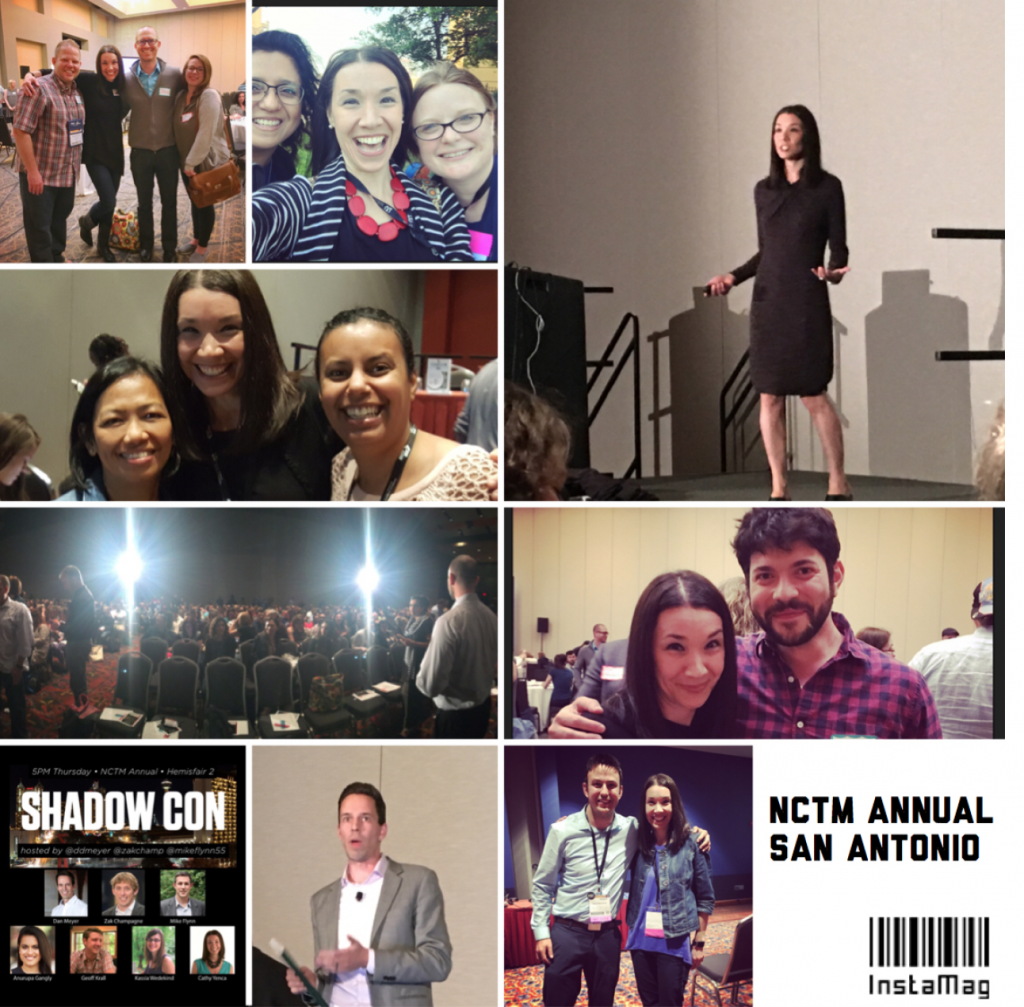 Of course we attend professional conferences to attend sessions and soak up the goodness like a sponge, but I would be remiss if I didn’t mention my favorite part of this conference: CONNECTING WITH YOU! “You” includes so many familiar faces that, until this conference, I knew from a tiny Twitter photo and a vast collection of work through blogs and shared resources that have made my teaching practice and my students’ classroom experiences all the better. I can’t describe the feeling I felt when I first walked in to the #MTBoS game night on Wednesday evening and finally got to high-five and hug so many awesome folks in our community. I was so giddy, I had a hard time sleeping that night. I was overwhelmed with joy, humility, and frankly, as a colleague of mine, Nadine, describes the feeling… cognitive crushes, ha!
Of course we attend professional conferences to attend sessions and soak up the goodness like a sponge, but I would be remiss if I didn’t mention my favorite part of this conference: CONNECTING WITH YOU! “You” includes so many familiar faces that, until this conference, I knew from a tiny Twitter photo and a vast collection of work through blogs and shared resources that have made my teaching practice and my students’ classroom experiences all the better. I can’t describe the feeling I felt when I first walked in to the #MTBoS game night on Wednesday evening and finally got to high-five and hug so many awesome folks in our community. I was so giddy, I had a hard time sleeping that night. I was overwhelmed with joy, humility, and frankly, as a colleague of mine, Nadine, describes the feeling… cognitive crushes, ha!
I love your brains, I love your work, and I respect you immensely.
P.S. Check out the Global Math “My Favorites” from NCTM sharing-session here: https://www.bigmarker.com/GlobalMathDept/NCTM-My-Favorites
Check out another great NCTM reflection from Kim Morrow Leong here.
Valuable presentation advice compiled kindly by Dan Meyer here.
Just found this gem (and others!) on @NCTM‘s Facebook page! Love our expressions, filled with all kinds of anticipation! #shadowcon17 #MTBoS pic.twitter.com/S8b7JGEKXT
— Cathy Yenca (@mathycathy) June 1, 2017

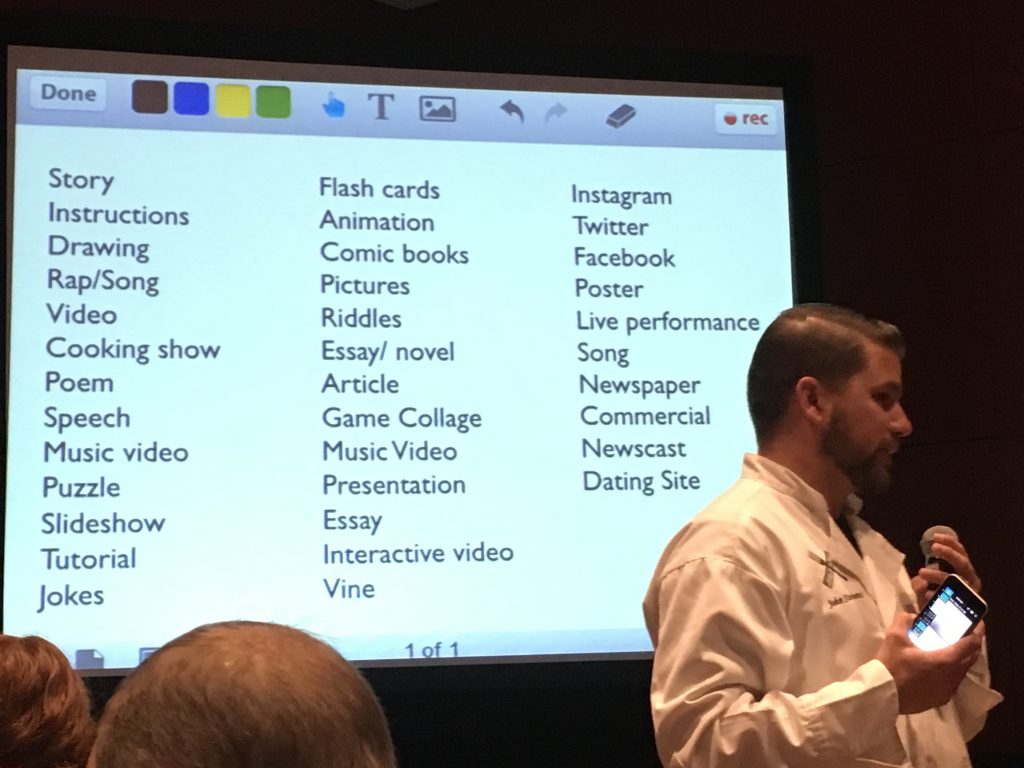

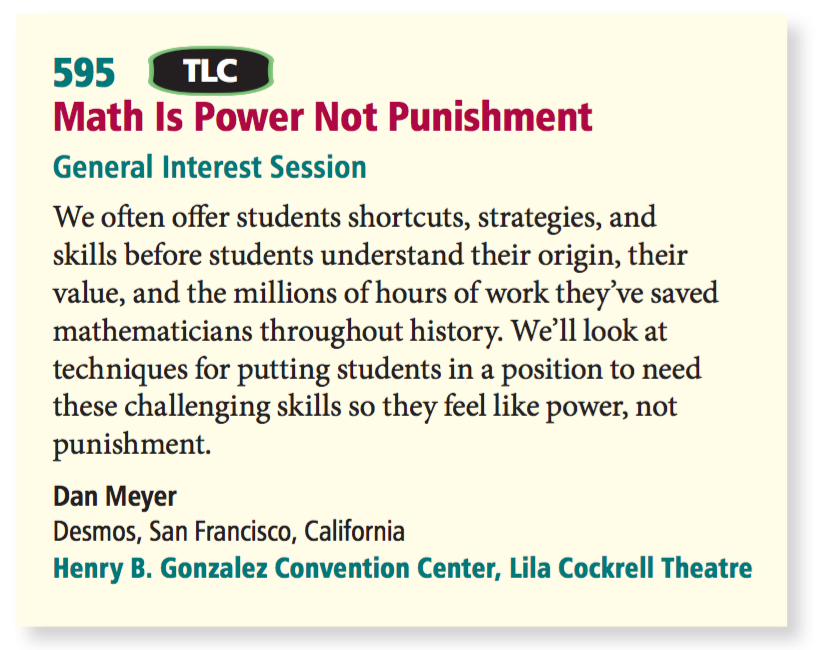
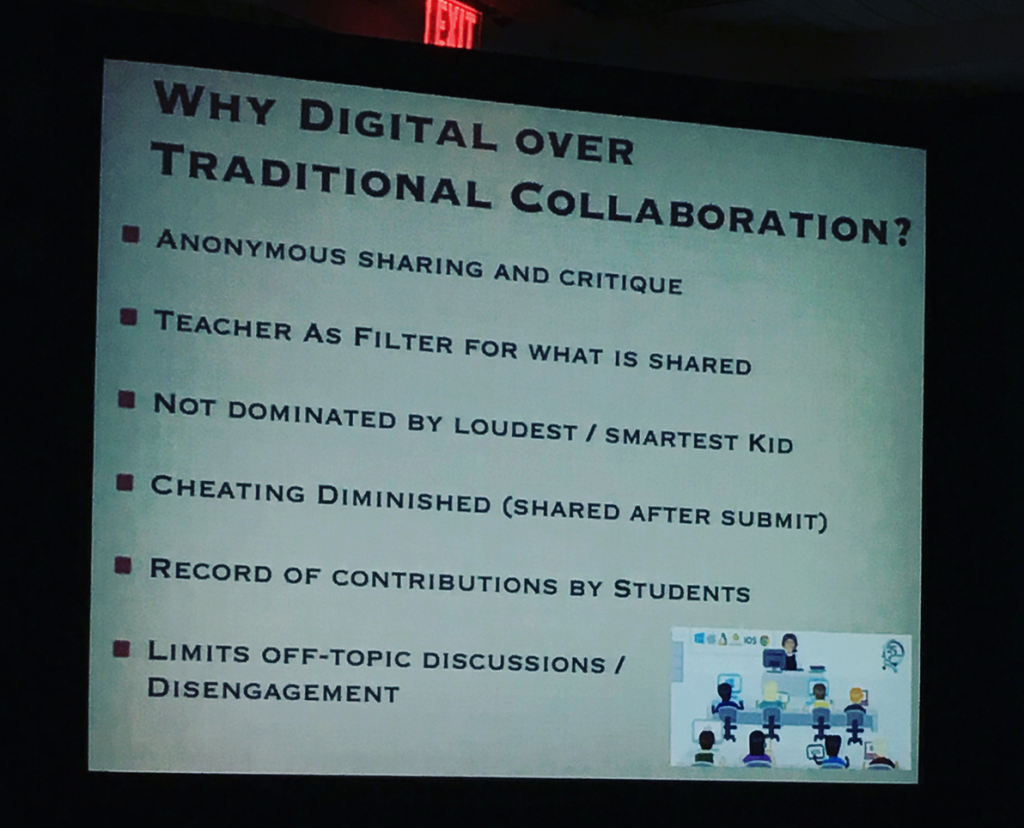


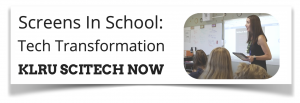
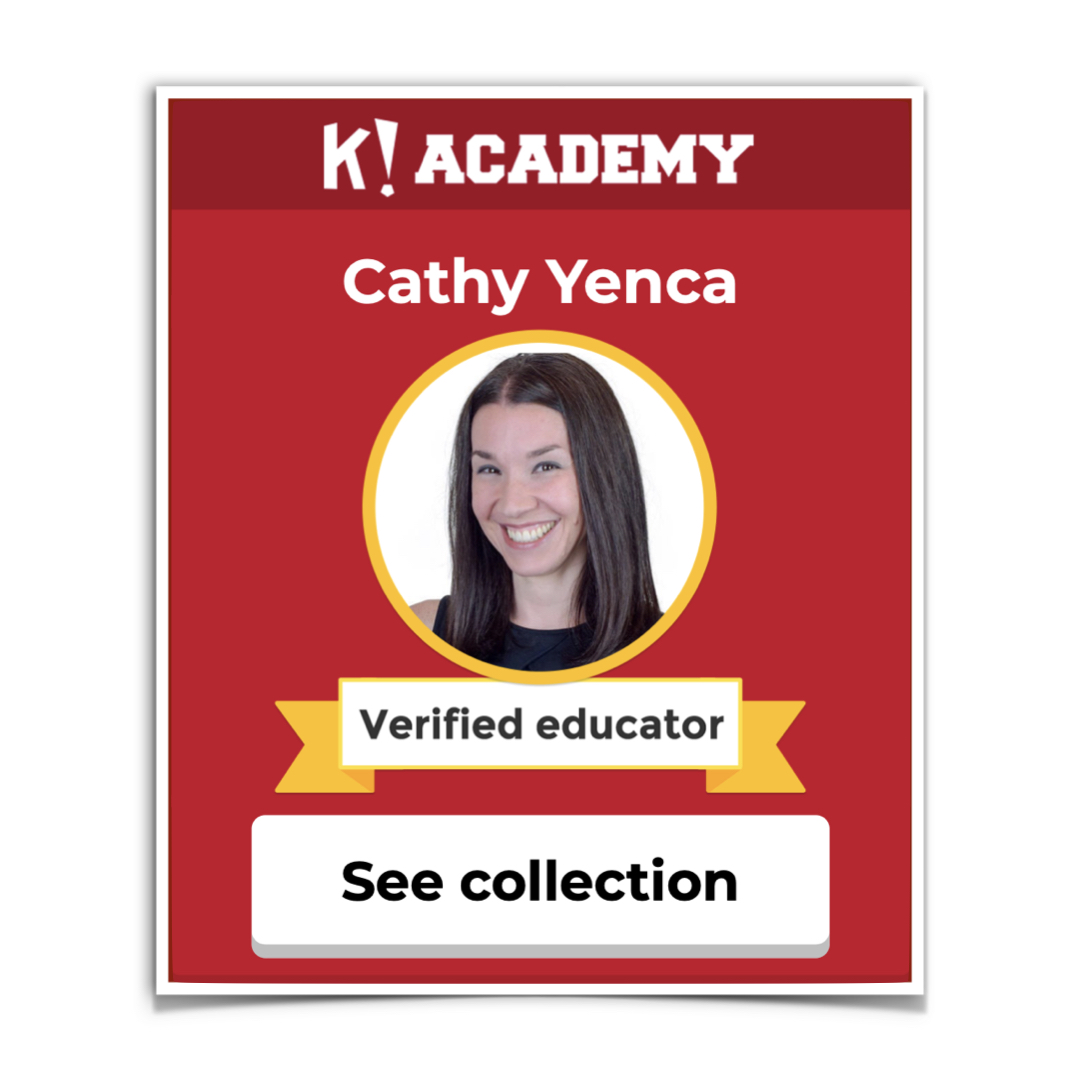
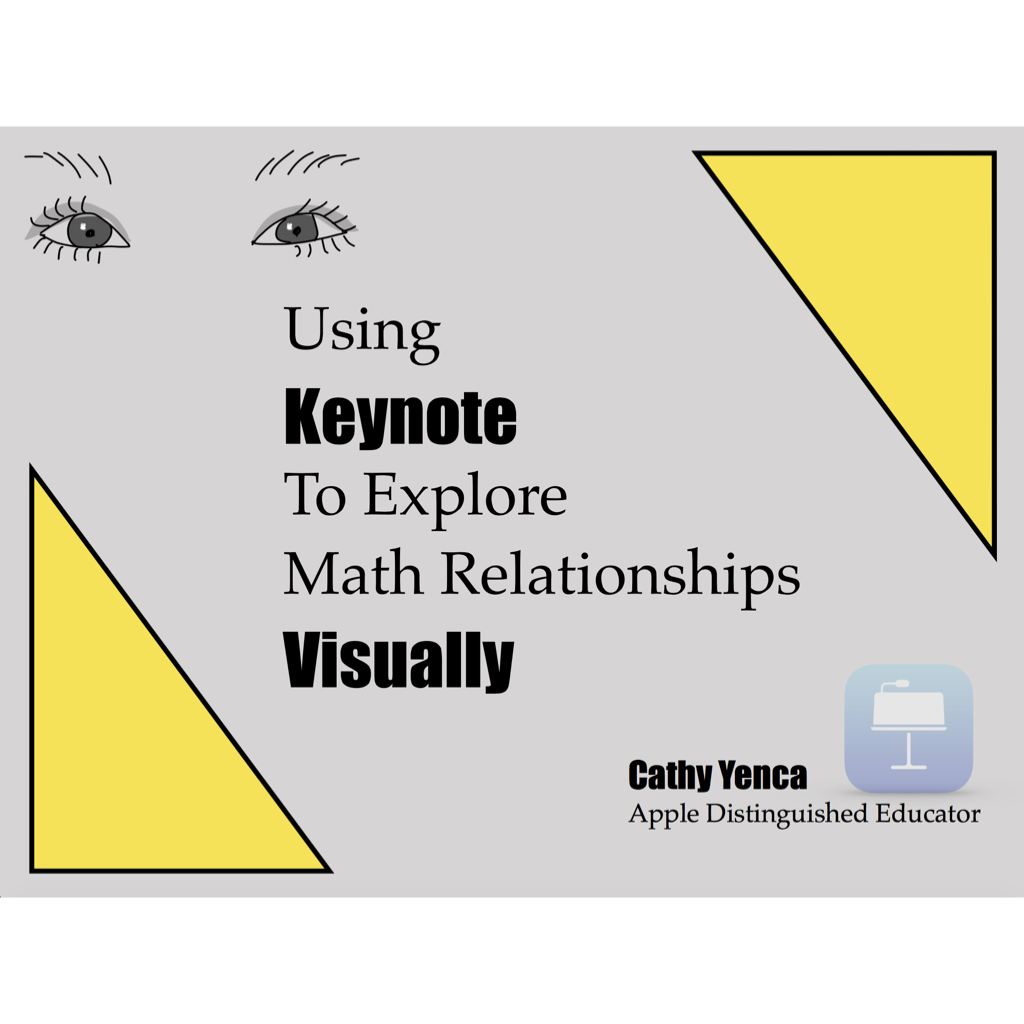
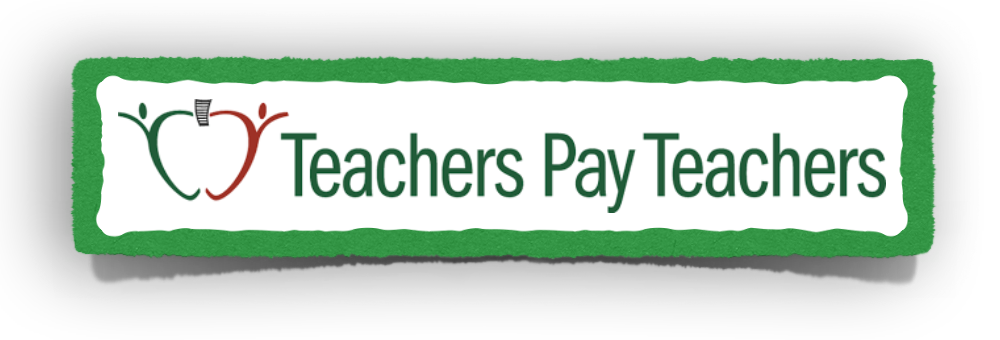

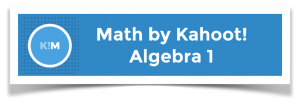

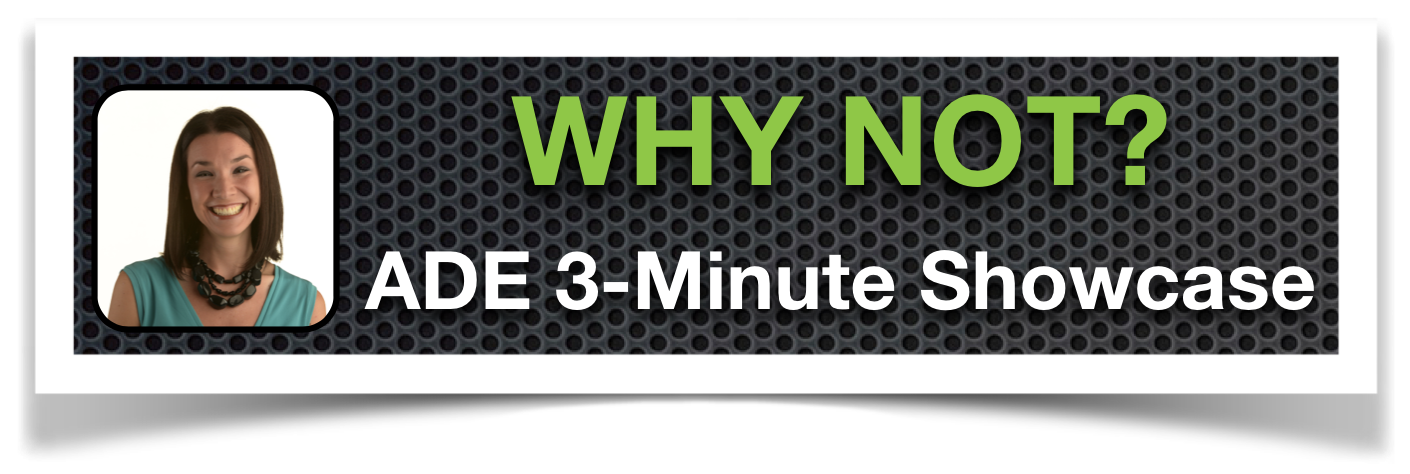
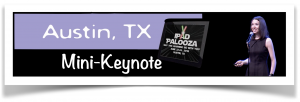

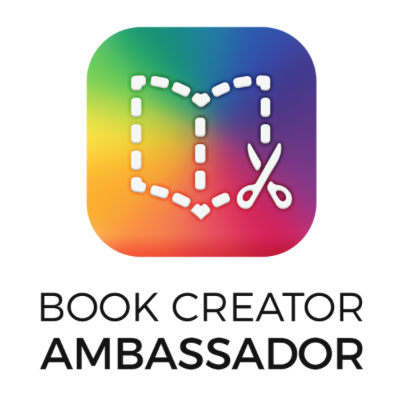
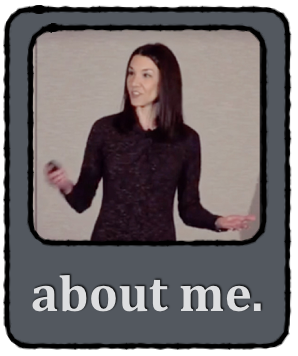
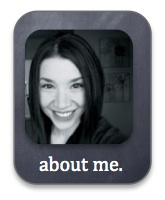
I love the entire idea of notice & wonder because a) it gives everyone a way into a problem and b) it’s how real mathematicians actually think! I’ll also be super interested to see what IM/OER ultimately comes up with — what I’ve seen so far has been quite intriguing.
Pingback: #ISTE17 Reflections, Celebrations, and Healthy Kicks-in-the-Pants: Post 1 | MathyCathy's Blog – Mrs. Cathy Yenca
Pingback: #ISTE17 Reflections Post 2 (of 4) | MathyCathy's Blog – Mrs. Cathy Yenca